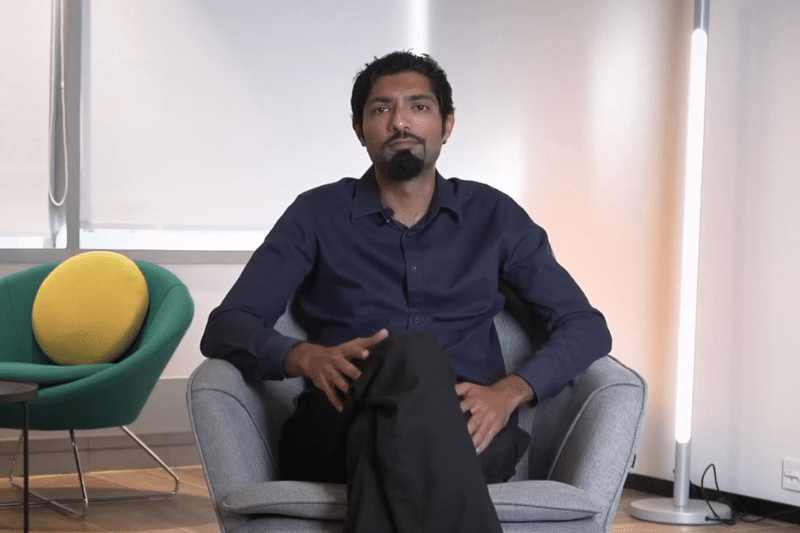Introducing Spidfier, the innovative lab-in-a-box fish identifier that is poised to revolutionise the way we combat fish fraud and promote sustainable seafood fishing practices. At the helm of this innovative venture are the dynamic duo, Dr Shakeel Ahmed and Dr Thrimendra Dissanayake .
In the vast expanse of the world’s oceans, the issue of fish fraud and unsustainable fishing practices has plagued the industry for decades. Enter Spidfier, a groundbreaking solution that has emerged as a beacon of hope in combating these challenges. With a compact, fast, and easy-to-operate lab-in-a-box fish identifier, Spidfier is set to transform the way we identify fish species and safeguard the future of our aquatic ecosystems.
With its easy operation and transportable design, Spidfier harnesses the power of DNA sequencing to accurately test all fish species and deliver results in just 30 minutes. But Spidfier goes beyond identification, utilising machine learning algorithms and a proprietary database to derive five key metrics from DNA data alone. It can determine fish origins, assess freshness, detect pathogens, and even uncover evidence of tampering through short weighting. By empowering stakeholders with accurate and timely information, Spidfier is set to transform the seafood industry, ensuring transparency and promoting a more sustainable future.
Hive Life sat down with the brilliant minds behind Spidfier, CEO, Dr. Shakeel Ahmed and CTO, Dr Thrimendra Dissanayake, to delve into their pioneering technology and its potential impact on the seafood industry.

How Did You Come Up with the Idea for Spidfier?
Spidfier was conceived out of our passion for laboratory systems for practical use cases that scientists work on. We wanted to make the life of a scientist easier by automating repetitive tasks and allowing scientists to spend time on the more important tasks such as data analysis.
As a naturalist scientist, the Founder, Dr. Shakeel Ahmed, had been passionate about nature and protecting it. UN SDG 14, life under water, is on the United Nation‘s watch list as seafood has been becoming less and less sustainable. This is partly because of malpractices collectively known as fish fraud, which accounts for 40% of seafood being mislabelled globally to dupe customers and leads to over US$40 billion loss from the global economy.
How Has the Use of AI and Data Analytics Evolved Over the Years, and What Role Does Spidfier Play in Shaping This Evolution?
Genetic data and their metrics have been subjected to machine learning over the past decade or so, allowing the data processing to be much faster. Spidfier is adding novel algorithms and data to the ecosystem to improve seafood supply-chain transparency and legitimacy in a shorter period of time by shortening the time required to authenticate a sample of fish.
Not to mention, the existing solutions are time-consuming, expensive, and require a lot of technical expertise. We are changing that by making our product faster, cheaper, and more accessible for anyone.

How Does Spidfier Tackle Fish Fraud and Build Consumer Trust?
Spidfier provides a turnkey, portable, lab-in-a-box for regulators and certifiers, making their job easier and thus allowing easier screening of imported, exported or spot-checked seafood.
Short-weighting is the fraudulent practice of injecting water or slurry into fish to increase their weight. This can be checked by reading cell genome copy numbers in a fixed sample size.
How Does Your Propietary AI and Machine Learning-Based System Ensure Result Accuracy and Reliability?
We compare the results of our proprietary methodology with that of traditional time-consuming methods for the same purpose.
As we are an early stage DeepTech, currently we are involved with only 1 major client (undisclosed) for checking certain shark species, and have over 10 major clients in the pipeline that are global players in conservation, sustainability, and seafood supply-chain.

Why is Technology Like Spidfier a Valuable Investment for Businesses?
As per our projections, the return on investments is high, while reducing the costs for customers and improving seafood sustainability. Furthermore, it can reduce possible fines in the future that may incur from importing or exporting potentially mislabeled fish received unknowingly from different sources.
How Can Governments Benefit From Adopting Your Tech Solution?
Yes, they are some of our current and potential clients. Countries and regions which are heavily dependent on fishing as a part of their economy would benefit the most. These include Scandinavian countries, Japan, etc.
What Challenges Have You Faced in Combating Fraud and Ensuring Accurate Fish Identification?
The major challenge is further refining of the technology, which requires large amounts of funding mainly for R&D expenses to ensure the accuracy of our technology.
We are deeply connected to multiple bioinformatics algorithms labs and personnel to remain up to date. Our main team members are also scientists who keep themselves up to date with novel published science.

Are There Any Future Developments or Advancements in the Works for Spidfier?
We envision creating even further compacted and more re-usable DNA testing systems not only for the seafood industry but any genetics related industry.
We also envision a more transparent seafood supply-chain ecosystem and our technology has the potential to become a leading player in seafood supply blockchain.

What are your thoughts on the future of AI and data analytics? What trends or developments do you anticipate in the coming years?
We anticipate the usage of AI and data analytics to become more prominent than present for the use of good for mankind. In particular to our area, we expect that there would be a global consortium or sorts for the sharing of data analytics for a more transparent seafood supply chain.

What Message Would You Like to Convey to Entrepreneurs and Startups, Regarding the Importance of Leveraging Technology for Addressing Social and Environmental Challenges?
To entrepreneurs and startups, “You guys know what needs to be done to save the world if you want to. Depleting natural resources in the waters and not getting on your plate what you pay for are complex challenges solvable by technology.”

Related Articles
Improving APAC Supply Chain Sustainability With Technology





